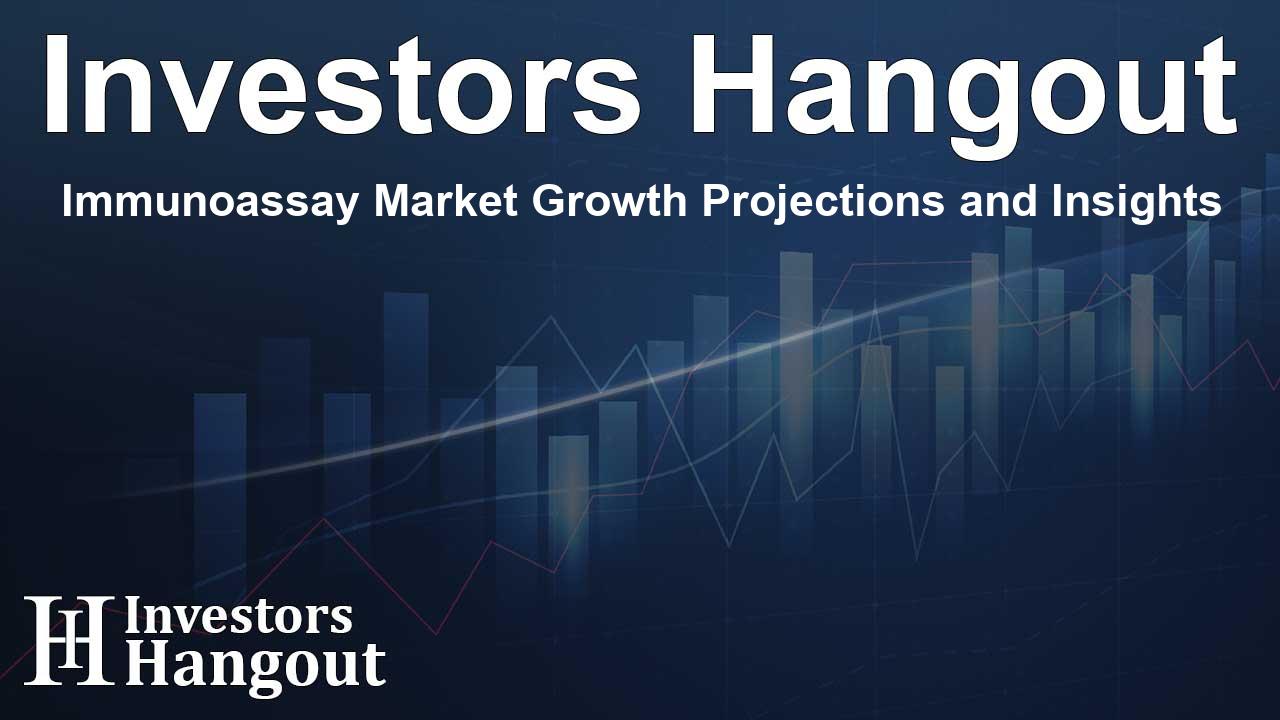Immunoassay Market Growth Projections and Insights

Overview of the Immunoassay Market
The immunoassay market is witnessing robust growth, with projections estimating a valuation of USD 34,490 million by 2025. This growth is anticipated to continue at a compound annual growth rate (CAGR) of 5.1% through 2034. These insights draw upon a report published by Statifacts, a prominent analytics firm.
Significant Factors Driving Market Expansion
Several key factors contribute to the growth of the immunoassay market. One of the primary drivers is the increasing focus on sustainable practices within the field of chemistry. There is a growing need for environmental monitoring methods to measure pollutants and contaminants, encouraging the adoption of biochemical tests.
The Role of Innovative Drug Development
The trend of drug repurposing, where existing medications are explored for new applications, emphasizes the importance of refined drug development strategies. Research institutions and pharmaceutical collaborations enhance the use of biochemical tools, fostering significant advancements and opportunities in clinical diagnostics.
Advancements in Technology
The integration of artificial intelligence (AI) in drug discovery has emerged as a crucial factor driving the demand for advanced immunoassay tools. As researchers aim to innovate and expedite the drug design process, the need for sophisticated computational methodologies becomes essential in improving efficiency and functionality.
Healthcare Trends Influencing Demand
The rising global population coupled with an increase in chronic diseases significantly boosts the demand for diagnostic tests. Continuous research in CLIA and other technologies fosters the development of enhanced diagnostic tools, improving their performance and accessibility.
Technological Integration and Testing Innovations
Technological advancements such as the Enzyme-Linked Immunosorbent Assay (ELISA) and rapid testing methods are gaining traction. These technologies provide efficient solutions for a wide range of applications, including oncology and infectious disease testing.
Market Insights and Segmentation
Within the immunoassay market, the reagents and kits segment dominates. However, the software and services segment is witnessing rapid growth. The demand for biochemical testing solutions is steadily increasing, driven by the need for continuous monitoring and accurate diagnostics.
Growth of Clinical Laboratories
Clinical laboratories are emerging as the fastest-growing segment in this market due to rising requirements for drug investigations. Their capability to collect and analyze data on drug development enhances research and ensures safety in the pharmaceutical sector.
Regional Analysis of the Immunoassay Market
North America currently leads the immunoassay market, propelled by a surge in chronic conditions among a growing population. Efforts towards early detection and intervention are fostering increased demand for diagnostic solutions.
Growth in the Asia-Pacific Region
The Asia-Pacific region represents the fastest-growing market, supported by ongoing research and development in new drugs and therapies. Advancements in telemedicine are also promoting better patient engagement and monitoring, which could transform immunoassay testing.
Challenges and Future Outlook
The integration of big data analytics and computational tools is reshaping the landscape of the immunoassay market. By allowing thorough data interpretation, these advancements enable researchers to reveal insights that were previously hampered by data limitations.
The Future of Immunoassay
As the competition in drug discovery intensifies, the reliance on innovative technologies and sophisticated methodologies becomes vital for success. The interplay of these technologies will continue to drive both growth and innovation in the field of immunoassay.
Frequently Asked Questions
What is the projected growth rate of the immunoassay market?
The immunoassay market is expected to grow at a CAGR of 5.1% from 2025 to 2034.
What factors are contributing to the rise of this market?
Key factors include the increasing demand for diagnostic tests, advancements in technology, and a focus on sustainable practices in environmental monitoring.
Which regions are leading in the immunoassay market?
North America currently leads the market, with Asia-Pacific emerging as the fastest-growing region.
How does AI impact the immunoassay market?
The integration of AI enhances drug discovery processes, improving efficiency and innovation in immunoassay technologies.
What segments are critical within the immunoassay market?
The market is primarily segmented into reagents and kits, software and services, with clinical laboratories showing rapid growth.
About The Author
Contact Dominic Sanders privately here. Or send an email with ATTN: Dominic Sanders as the subject to contact@investorshangout.com.
About Investors Hangout
Investors Hangout is a leading online stock forum for financial discussion and learning, offering a wide range of free tools and resources. It draws in traders of all levels, who exchange market knowledge, investigate trading tactics, and keep an eye on industry developments in real time. Featuring financial articles, stock message boards, quotes, charts, company profiles, and live news updates. Through cooperative learning and a wealth of informational resources, it helps users from novices creating their first portfolios to experts honing their techniques. Join Investors Hangout today: https://investorshangout.com/
The content of this article is based on factual, publicly available information and does not represent legal, financial, or investment advice. Investors Hangout does not offer financial advice, and the author is not a licensed financial advisor. Consult a qualified advisor before making any financial or investment decisions based on this article. This article should not be considered advice to purchase, sell, or hold any securities or other investments. If any of the material provided here is inaccurate, please contact us for corrections.
